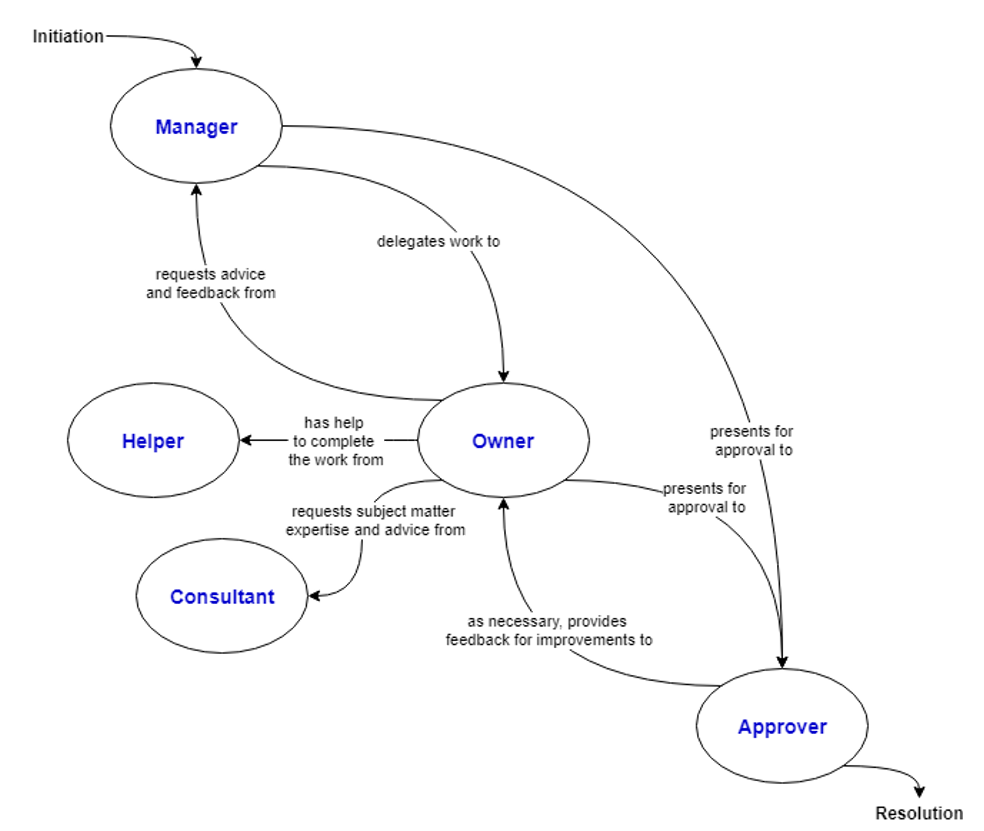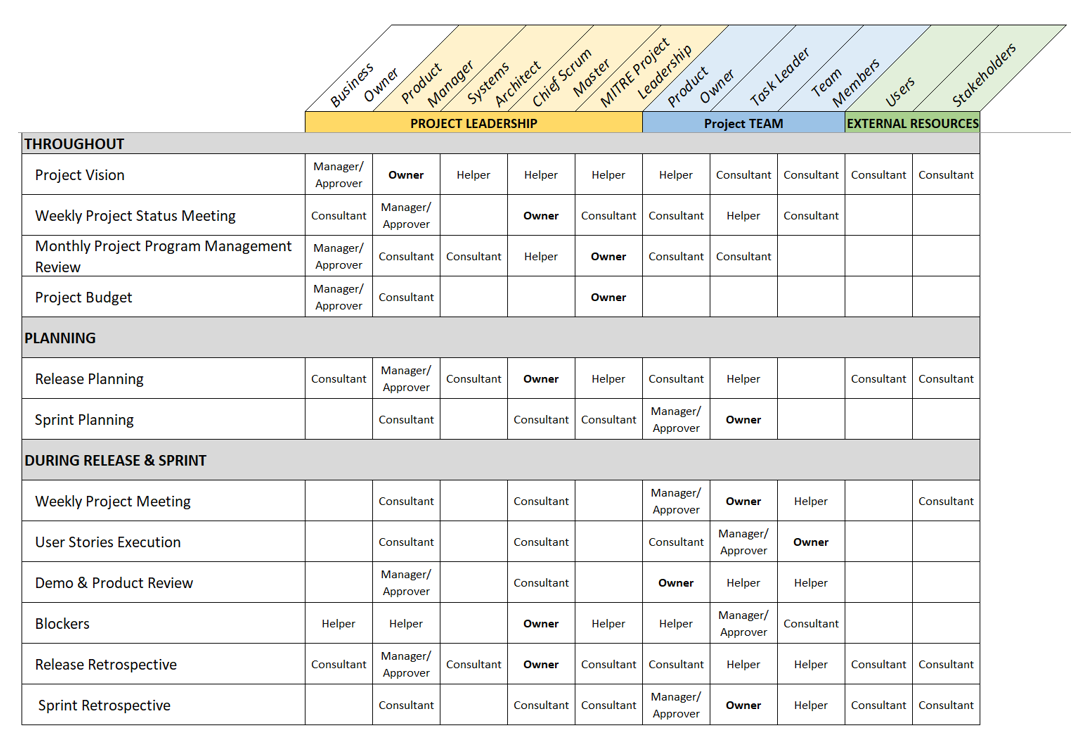MOCHA is Way More Than a Drink

Photo by freephotocc on pixabay
Author: Liz Roberts
When you launch a project team, what are your go-to methods for kicking off, building cohesion, establishing goals, and delivering value together? If you’ve been thinking about refreshing your toolkit, would you consider a customizable process—with or without steamed milk—to ensure that everyone knows why they are on the project and why it is going to be the best one ever?
I am a member of the leadership team for a project looking for ways to improve how we work. Wanting to be responsible stewards of our funding, we have customized the way we work together—think the 2004 hockey film Miracle—to improve product delivery, increase collaboration across the team, and enable smoother processes. Although we understood our roles and jobs from the get-go, I made it my personal mission to frame the roles in terms everyone could understand while enjoying a cup of coffee.
Many of our team members were stepping into Agile roles like Product Manager, Product Owner, Business Owner, and Scrum Master while trying to rock multiple duties for ongoing roles. Why not stir things up to improve how we could get our group of dedicated performers to work better together?
Luckily, a colleague had introduced me to an invigorating way to re-imagine teamwork: the MOCHA (Manager, Owner, Consultant, Helper, Approver) framework. MOCHA clarifies roles and responsibilities within teams, promotes effective communication on those roles and responsibilities, and helps generate better results with a more positive, engaging, and collaborative experience for everyone. The colleague who had recommended MOCHA felt strongly that its five facets were more comprehensive than the four offered by RACI (Responsible, Accountable, Consulted, Informed) and other similar tools. Intrigued, I opted to experiment.
Understanding MOCHA
So that you can orient yourself, here’s an snapshot of MOCHA adapted from The Management Center MOCHA for Managers:
- The Manager assigns responsibility and holds the Owner accountable, makes suggestions, asks tough questions, reviews progress, serves as a resource, and intervenes if the work is off-track. Depending on the size of the team, duration and scope of the work, and the organization structure, a Managermay also serve as an Owner and/or an Approver. If this sounds tedious, please take another sip of your favorite caffeinated beverage.
- The Owner is responsible for the success or failure of the activity, ensuring that all the work gets done (directly or with helpers). There should be only one Owner, who supervises the team to complete the work following the Manager’s guidance and acceptance criteria.
- The Consultant offers input or advice as a subject matter expert. Including internal and external (to the project) consultants reduces rework and increases innovation. Think team whisperer.
- The Helper, similar to an individual contributor on non-MOCHA projects, assists with or does some of the work, contributing to the activity, maybe as an author, data provider, or analyst. Most projects need infusions of excellence, and the Helper role builds in this generosity. The Owner can rely on us to achieve the outcomes.
- The Approver signs off on decisions.
Definitions notwithstanding, I built my own visualization (using SystemiTool and a café latte) to literally see how MOCHA worked. Yup, I’m an engineer—gotta see the process. Each circle or node represents a MOCHA role.

Of course, it’s not just about the project team—it’s about delivering the work—so we built a table that showed us how we would structure all of our processes, Agile roles, and MOCHA roles. The rows were the major processes, and the Agile and project roles were the columns. We tried to be comprehensive so that all team members could see themselves in the table. Finally, the center portion included the MOCHA role assignments based on best practices and project maturity at the time. This process and role summary (built in Excel) fit nicely on a single PowerPoint slide, making it easy for initial understanding, implementation, and periodic reviews and updates. A sample table is below.

Implementing MOCHA
Our intent has never been to teach ourselves MOCHA and then put the cups back in the cupboard. We actively revisit it during:
- Release and sprint retrospectives and lessons learned sessions
- Periodic meetings, such as monthly program management reviews
- Individual performance check-ins and performance reviews
During these reviews, we ask the team: “Does this still reflect how we are operating?” and “Do we need to make any adjustments to improve outcomes based on lessons learned?” If we are successful, we hope to see improvements in collaboration across the project, team members meeting and (we hope) exceeding expectations, smoother processes, less confusion, and no need to chase people to get work done.
Additional Applications for MOCHA
If your team works with defined processes, you could benefit from applying MOCHA. Consider these applications of the framework to inspire you:
- If you’re a Project or Program Manager, use it to define the processes and roles for the team and consider including external stakeholders
- If you’re in Leadership, it can help when defining role for an Integrated Product Team (IPT) or a similar temporary project
- If you’re level-setting at the beginning of a project, MOCHA can help with developing a charter to present during the kick-off meeting
- If you’re in need of Process Improvement, it will help you to understand potential role and responsibility adjustments
- And, if you need help with basic team functions, this approach offers new ways to handle team member check-ins and performance feedback
I am excited about the value, clarity, and simplicity that MOCHA is bringing to my team. At this point, you may be wondering about my own MOCHA role on the project—good question, and the answer is not a simple one. My role varies depending on the process—Helper, Owner, or Manager. In experiencing how this framework works from the perspective of three different roles, this is one framework that’s become my cup of…um… I hope it’ll suit you to a… well… Let’s just say that as a Manager, Owner, Consultant, Helper, or Approver, it fills my cup.
Liz Roberts is a Multi-Discipline Systems Engineer at MITRE. She is constantly exploring new ways of working, especially where they increase team performance and the ability for leaders to make timely and informed decisions. Her 2021 New Year’s Resolution is to Do, Learn, Do Better, Repeat.
© 2021 The MITRE Corporation. All rights reserved. Approved for public release. Distribution unlimited. Case number 21-0293.
MITRE’s mission-driven teams are dedicated to solving problems for a safer world. Through our public-private partnerships and federally funded R&D centers, we work across government and in partnership with industry to tackle challenges to the safety, stability, and well-being of our nation. Learn more about MITRE.
See also:
Capturing Knowledge for Future Work
Supporting Sponsors to Solve Their Own Challenges: Moving from Exulted Expert to Guide
Encouraging the Next Generation of Innovative Thinkers
Field of Teams: Building it so They’ll Come with Change Management
Come Together: Knitting as Craft and Metaphor for Building Virtual Social Culture
The Lunch and Learn is not the Solution to Everything
Changing Organizations Using the Power of Localism
Communication—the Special Sauce of Major Change
Mistakes and Transcendent Paradoxes: Dr. Peter Senge Talks on Cultivating Learning Organizations
Naming the Elephant in the Room
Preparing for the Future by Knowing How to Take a Punch
Interview with Awais Sheikh on Deciphering Business Process Innovation
Interview with Dan Ward, Rachel Gregorio, and Jessica Yu on MITRE’s Innovation Toolkit
